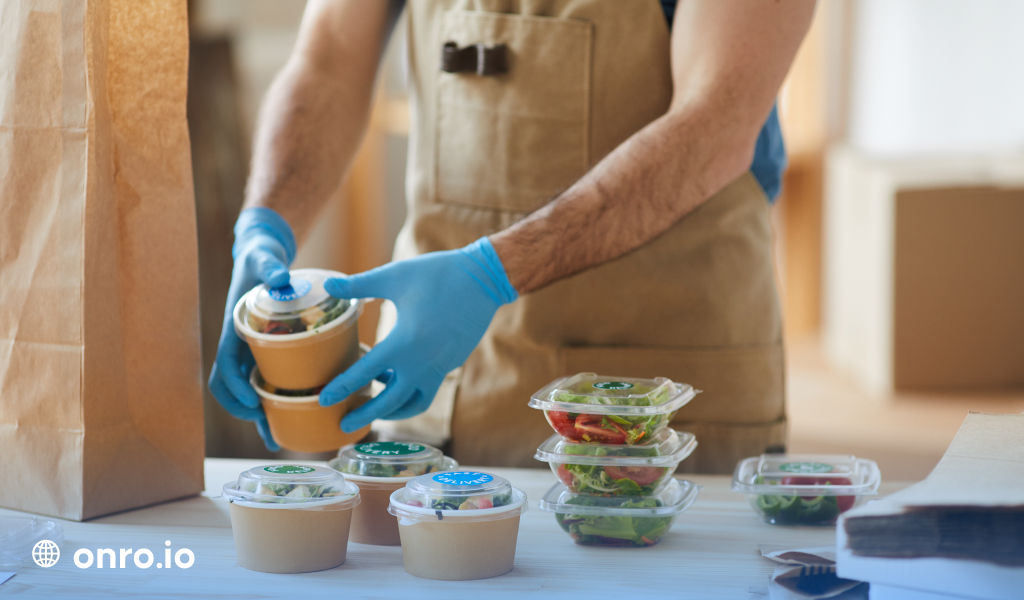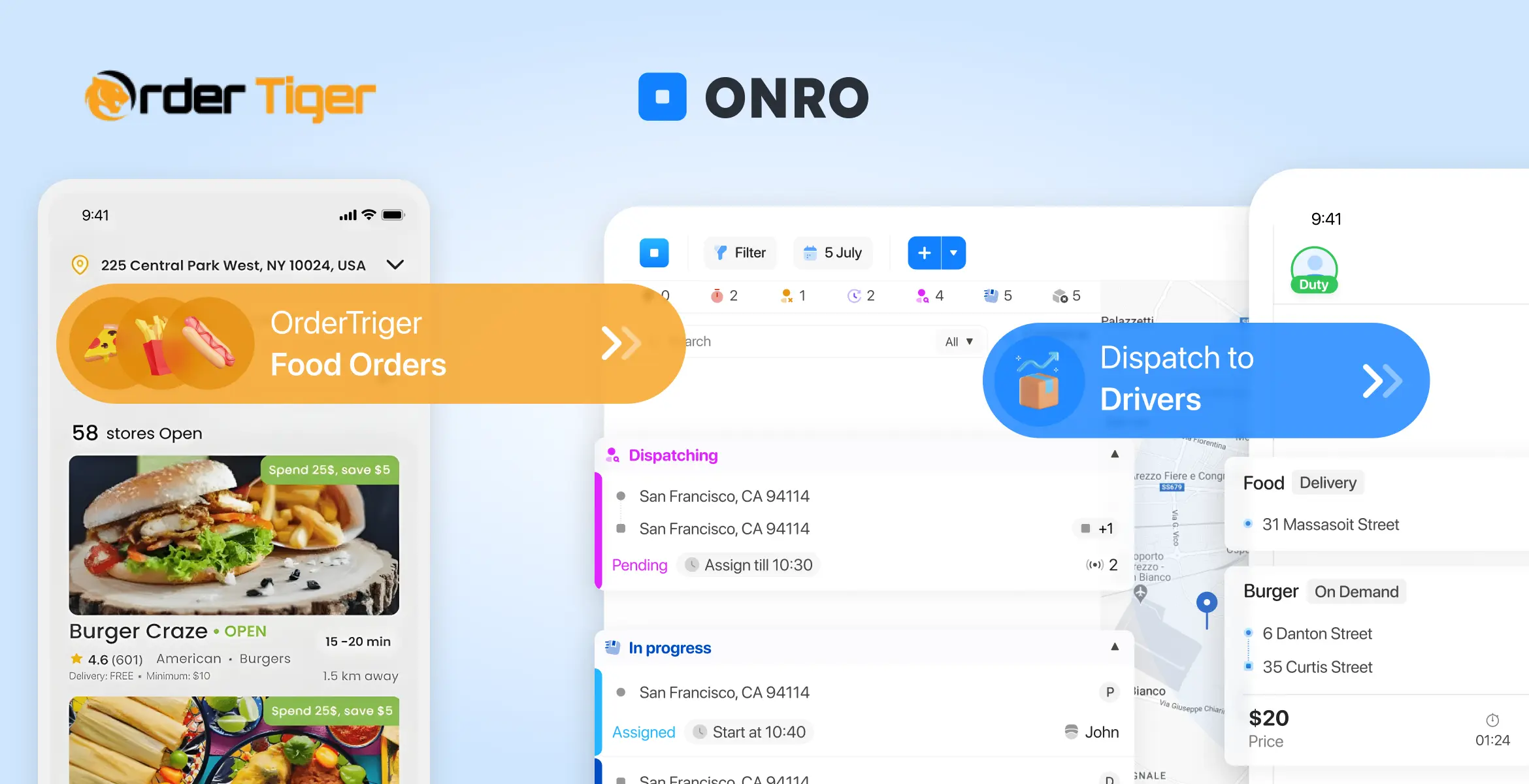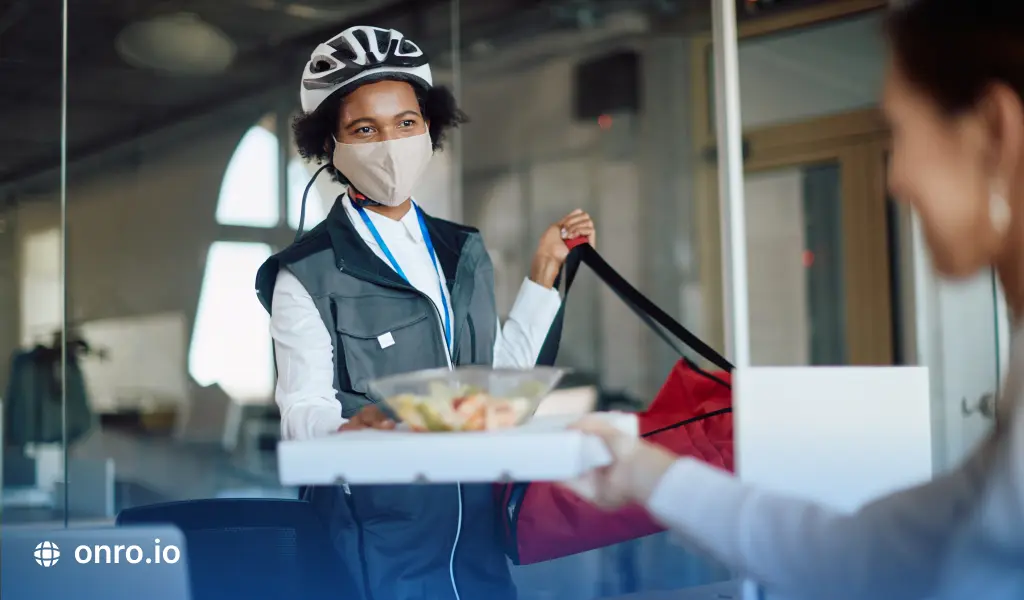In today’s fast-paced and convenience-driven society, the food delivery industry has witnessed remarkable growth and transformation. With the advent of technology and changing consumer behaviors, starting a food delivery business has become an enticing opportunity for entrepreneurs. Whether you’re passionate about food, want to tap into the ever-growing market, or simply have an innovative idea, venturing into the food delivery business can be a rewarding endeavor. However, navigating this competitive landscape requires careful planning, strategic execution, a powerful food delivery software, and a thorough understanding of the industry. In this essay, we will explore the essential steps and considerations to successfully start a food delivery business.
1. Select the Right Type of Food Delivery Business
In the food delivery industry, there are two primary types of businesses that offer convenient meal delivery services. The first type encompasses restaurants that provide their own delivery service, allowing customers to enjoy their favorite dishes from the comfort of their own homes. The second type revolves around platforms that act as intermediaries between customers and a wide range of restaurants, offering a diverse selection of cuisines and streamlining the ordering and delivery process. These platforms, often referred to as food delivery platforms, have gained immense popularity, with industry giants like UberEats, Grubhub, and DoorDash leading the way.
So, two types of food delivery businesses are:
- Restaurant-Based Delivery Services: Restaurants, caterers, or food providers that offer their own delivery service, bringing meals directly to customers’ homes.
- Food Delivery Platforms: Aggregators that connect customers with a wide range of restaurants, providing a diverse selection of cuisines and streamlining the ordering process.
When considering the type of food delivery business to embark upon, it is important to assess your role and capabilities. If you are a food delivery provider, such as a restaurant or caterer, opting for the first type of business is a suitable choice. By establishing your own delivery service, you can directly deliver meals to customers’ homes, ensuring quality control and enhancing the customer experience. On the other hand, if you do not have a food providing infrastructure or prefer a more flexible approach, starting a food delivery platform may be the better option. As a platform aggregator, you can connect customers with a wide range of restaurants, offering a diverse selection of cuisines and streamlining the ordering and delivery process.
2. Understanding Regulatory Requirements in Food Delivery Businesses
Regulatory requirements for the two types of food delivery services, restaurant-based delivery services and food delivery platforms, differ in several aspects. Restaurant-based services involve obtaining licenses and permits related to food preparation and transportation, complying with health and safety regulations, and following employment and vehicle regulations. Food delivery platforms, as intermediaries, focus on business registration, data protection, consumer protection, and liability considerations. It’s important to note that specific requirements may vary based on the area. Consulting legal experts or regulatory authorities is recommended for accurate guidance.
3. Build an Online Presence
To build an effective online presence for your food delivery business, start by creating a professional website and user-friendly mobile app with online ordering capabilities. Integrate popular payment gateways for seamless transactions. Leverage social media platforms and digital marketing techniques to increase brand visibility and engage with customers. Encourage customer reviews and testimonials to build trust. Implement loyalty programs and promotions to incentivize repeat orders. Regularly monitor online performance, engagement metrics, and customer feedback to optimize your online presence and enhance the overall customer experience.
4. Choose the Right Driver Working Type for Your Food Delivery Business
When establishing a fleet for your food delivery business, you have two options: hiring drivers as employees or working with them as self-employed contractors. Each method has its own advantages and considerations.
Hiring drivers as employees provides greater control and oversight over their work. You can establish specific work schedules, train them according to your standards, and enforce company policies. Employees also have a stronger sense of loyalty and commitment to your business, as they are part of your team. However, employing drivers means taking on additional responsibilities, such as payroll, benefits, and insurance coverage, which can increase administrative and financial obligations.
On the other hand, working with drivers as self-employed contractors offers more flexibility and reduced administrative burden. Contractors typically use their own vehicles and are responsible for their own expenses, including fuel and maintenance. They have the freedom to choose when and how much they work, which can help ensure a larger pool of available drivers during peak times. However, with this model, you have less direct control over drivers’ actions, and it may be challenging to enforce certain standards or protocols.
The choice between hiring drivers as employees or working with them as self-employed contractors depends on your specific business needs, resources, and legal regulations in your jurisdiction. Consider factors such as the level of control you desire, the flexibility needed for your operations, and the legal and financial implications of each option. It is advisable to consult with legal and HR professionals to ensure compliance with employment laws and regulations, regardless of the model you choose.
5. Building Partnerships: A Crucial Aspect of a Successful Food Delivery Platform
If you are starting a food delivery platform, to build successful partnerships for your food delivery business, begin by identifying suitable restaurants, chefs, or home cooks that align with your target market and offer a diverse menu. Initiate discussions to express your interest and explore collaboration opportunities. Negotiate contracts and agreements that outline the terms and conditions of the partnership, including commission structures, menu selection, delivery logistics, and quality standards. Establish effective communication channels and provide support to foster a mutually beneficial relationship. Continuously evaluate performance, seek feedback, and consider expanding your partner network to offer a wider range of culinary options to your customers.
6. Provide Excellent Customer Service
To ensure the success of your food delivery business, it is essential to prioritize excellent customer service. This can be achieved by focusing on several key aspects. Firstly, strive to respond promptly to customer inquiries and complaints. Provide multiple channels of communication, such as phone, email, or live chat, to address any concerns or questions customers may have. Prompt and courteous responses demonstrate your commitment to their satisfaction.
Implementing a feedback system is crucial for gathering customer reviews and insights. Encourage customers to provide feedback on their experience, whether through your food delivery software, review platforms, or direct communication. Analyze this feedback to identify areas for improvement and make necessary adjustments to enhance your services.
Consistently monitor and analyze customer feedback and reviews to identify trends and patterns. Use this information to make data-driven decisions and implement changes that address common concerns or improve the overall customer experience.
By prioritizing excellent customer service, promptly responding to inquiries and complaints, implementing a feedback system, and continuously improving based on customer insights, you can build a strong reputation, foster customer loyalty, and set your food delivery business apart from the competition.
7. Promote Your Food Delivery Service
Promoting your food delivery business is essential to attract customers and increase brand awareness. One effective approach is to offer promotions, discounts, or incentives to encourage initial orders. This can include offering first-time customer discounts, free delivery for a limited time, or loyalty programs that reward frequent orders. By providing these incentives, you can entice customers to try your service and establish a positive impression.
To reach your target customer segments, develop comprehensive marketing strategies. Identify your key demographics and tailor your marketing efforts accordingly. Utilize various channels such as social media platforms, online advertising, and email marketing to engage with potential customers. Craft compelling and visually appealing content to showcase your menu offerings, highlight customer testimonials, and communicate the convenience and benefits of using your food delivery service.
Consider collaborating with influencers, local bloggers, or food critics to generate buzz and increase exposure. Encourage customers to share their positive experiences on social media and offer referral incentives to motivate them to spread the word about your business.
8. Optimize Your Food Delivery Operations
Leveraging advanced software solutions can significantly enhance the efficiency, accuracy, and overall performance of your food delivery business. By integrating a robust food delivery software into your operations, you can optimize various aspects of your business workflow.
A comprehensive food delivery software offers features such as dispatching, driver tracking, real-time notifications, and delivery route optimization. These capabilities empower you to efficiently handle a high volume of orders, minimize delivery times, and ensure accurate and timely deliveries.
At Onro, we offer a state-of-the-art food delivery software designed to revolutionize your delivery operations. Our comprehensive delivery platform seamlessly integrates with your existing systems and provides a user-friendly interface for effortless management. To see the capabilities, click the button below and get access to the free demo.
Summary
Optimizing your food delivery operations is vital for the success of your business. By leveraging advanced food delivery software, you can streamline delivery management, track deliveries, and automate key processes, resulting in increased efficiency and improved customer satisfaction. At Onro, we offer a comprehensive food delivery software designed to revolutionize your food delivery business. Click button below to get access to your free software demo and drive your business forward.
Try Onro for Free
Get your free access to the Onro Food Delivery Management Software.
Originally published June 7, 2023 9:02 am, updated Sunday, 27 August 2023.



